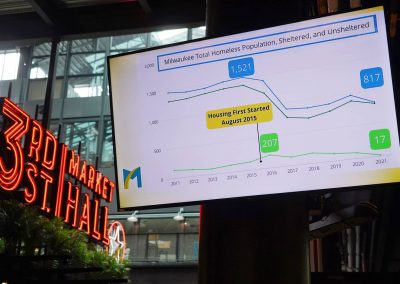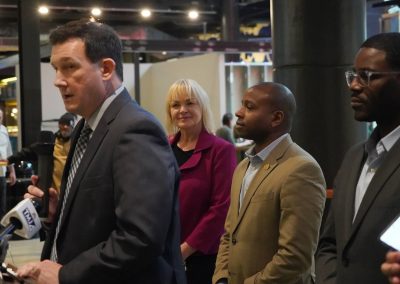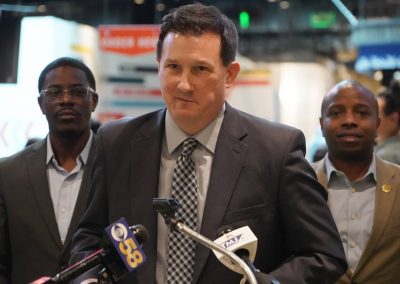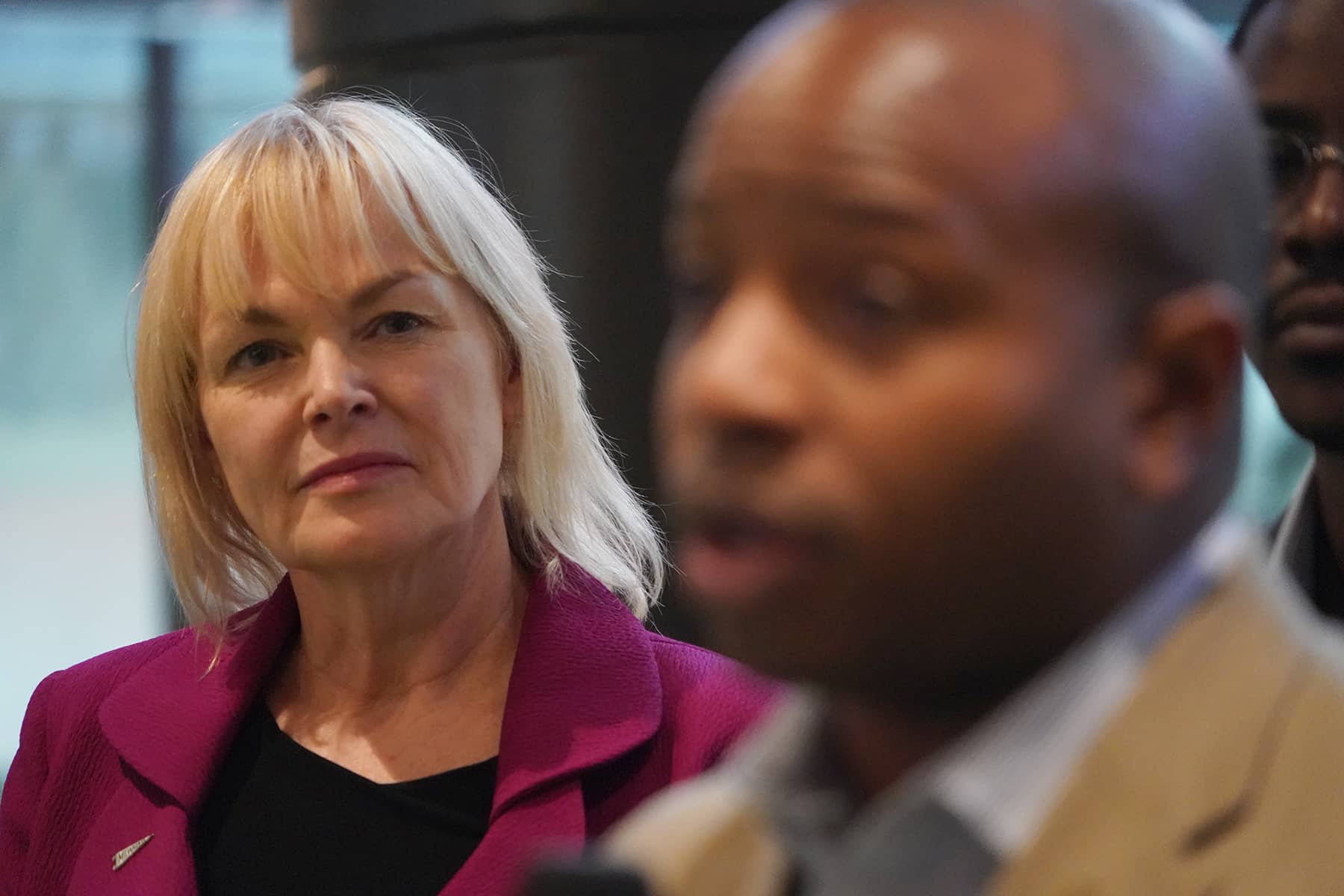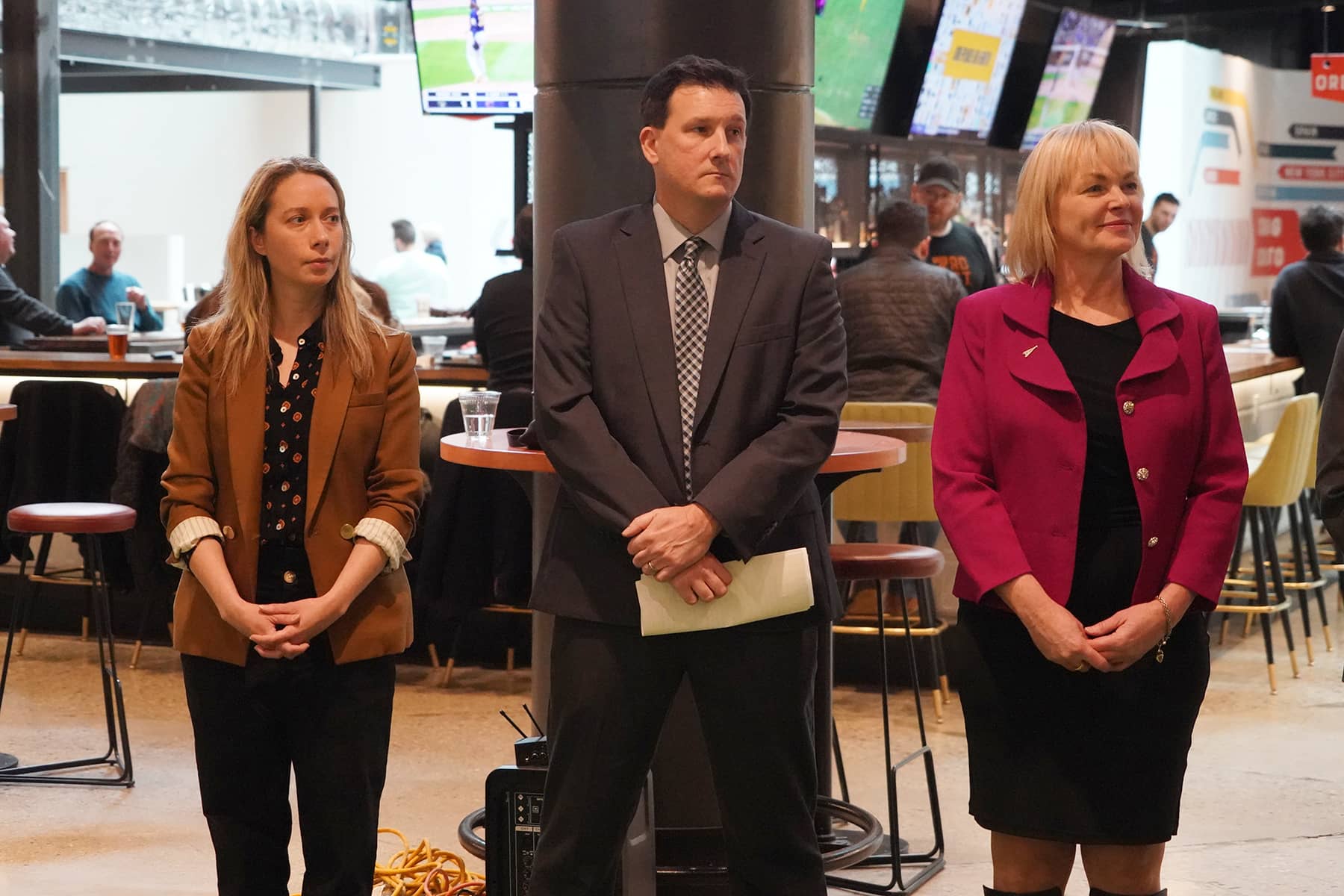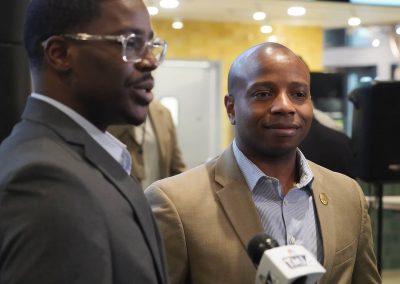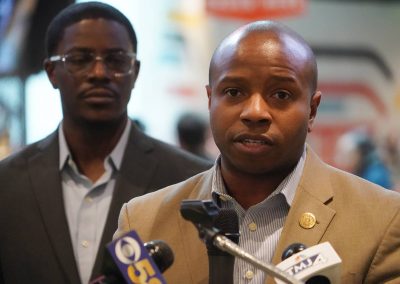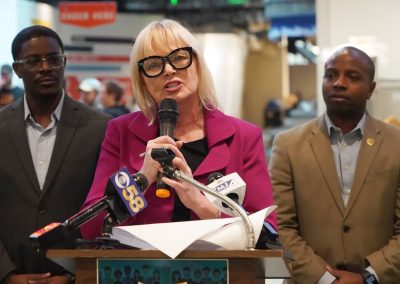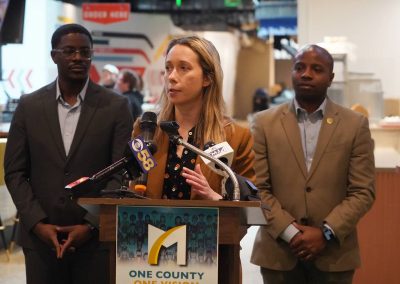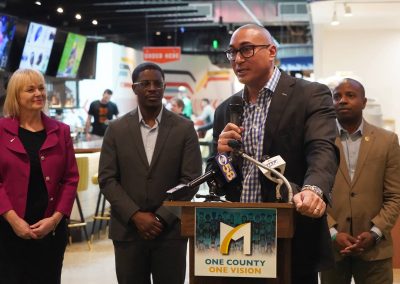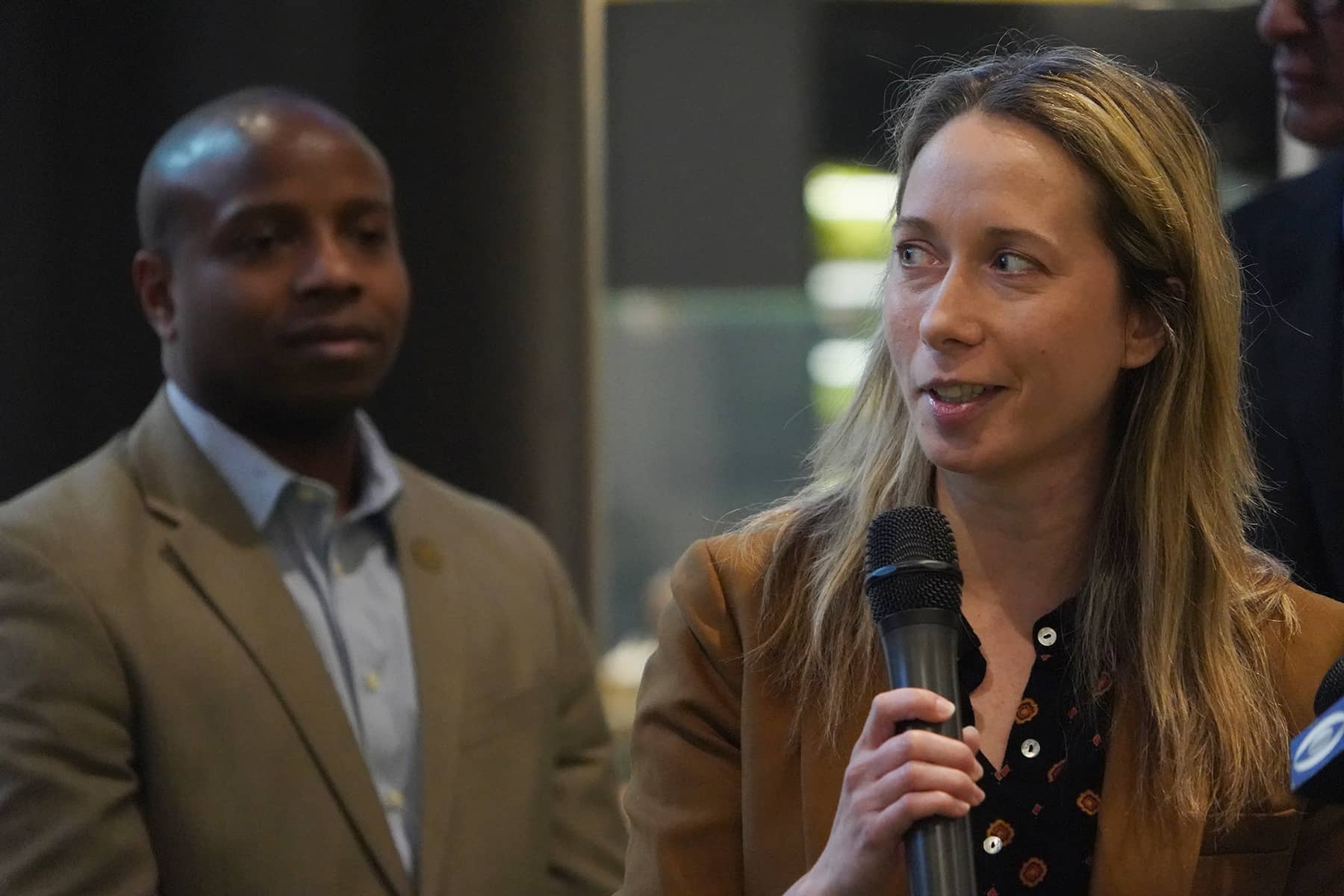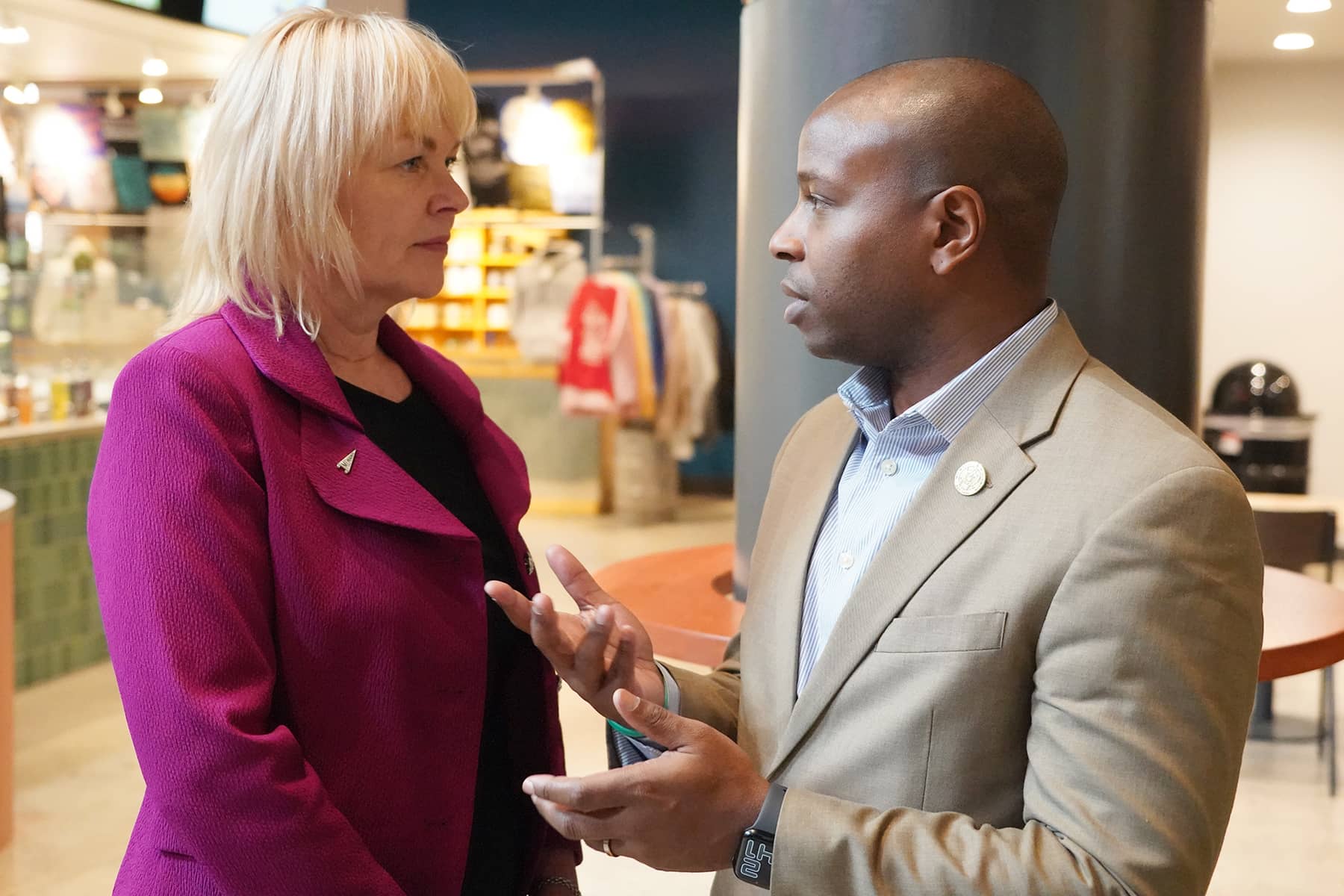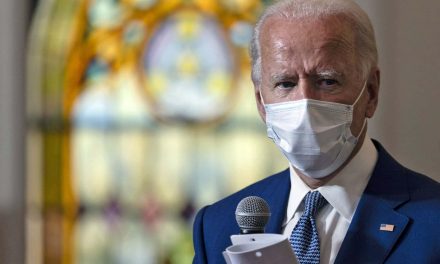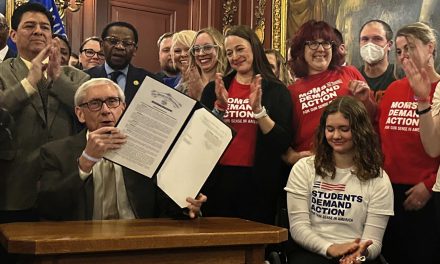
Milwaukee County, the City of Milwaukee, key business leaders, and community partners gathered on April 7 at the 3rd Street Market Hall on Wisconsin Avenue to announced that Milwaukee County had been recognized by the U.S. Department of Housing and Urban Development (HUD) with the lowest unsheltered homeless population of any community per capita in the nation.
Every year HUD commemorates National Fair Housing Month in April to advance equity in housing and securing equal access to housing opportunities for all. In recent years, Milwaukee County has taken a holistic approach to improving health outcomes in the community by looking through the lens of social determinants of health. The County has invested funds into Housing First programs, with the clear view that stable housing is needed to end homelessness.
“With 17 unsheltered individuals counted last year, that represents over a 70% reduction from the previous year. And what an outstanding accomplishment,” said Milwaukee County Executive David Crowley. “Furthermore, since the starting of the Housing First program in 2015, we have seen a 92% reduction in unsheltered populations. I’m proud of the work of our housing division at Milwaukee County.”
In addition, Milwaukee County has been a national leader in rental assistance, administering over $110 million dollars in federal emergency rental assistance funds. Ongoing efforts reflect its commitment to continue focusing on increasing permanent housing options, as a means to end the cycle of homelessness.
“Housing security is a key determinant of health for County residents. When you can’t count on having a roof over your head at night it compounds stress and anxiety and contributes mightily to the poor health disparities we see throughout the region,” said County Executive Crowley. “I’m happy to say that by prioritizing an evidence-based approach and maximizing collaborative efforts in the public and private sectors, we have reached this significant milestone, but the work is not done. As a County, region, and whole community, we must use this momentum to accelerate our efforts to invest upstream and end chronic homelessness in Milwaukee County.”
County Executive Crowley also said he felt energized from the level of collaboration that was happening between the public and private entities across the local area. He noted that many of the County’s downtown business partners had been involved from the very beginning, helping to kick off the Housing First model.
In his first public press conference since becoming the first elected Black Mayor of Milwaukee, Cavalier Johnson said how much he enjoyed collaborating with the County and other stakeholders. The issue of stable housing was very close to his heart from personal experience.
“I spent roughly the last eight months of my life talking about something that is critically important for the people of Milwaukee and their stability,” said Mayor Johnson. “We know that when there is housing involved at the front end, that is how we make sure the folks in our city who need these sorts of services have the stability to move forward in our lives. They face challenges, and the challenges on a daily basis can seem daunting sometimes. But the information we are highlighting today helps to tell a very important story. We can make a difference in the lives of people who face personal problems in here in Milwaukee. And through this effort, we have shown that working together is the very best path forward.”
Milwaukee County recently received a $7 million American Relief Plan Act (ARPA) contribution from the State of Wisconsin to focus on the development of over 100 homes in the neighborhood surrounding the County’s Marcia P. Coggs Human Services Center.
“With the Housing First initiative, Milwaukee County has led the way with critical investments to combat homelessness. When we reduce homelessness, we not only have healthier and safer communities, but also save tax payers money by avoiding undue burdens on our legal and health systems,” said U.S. Senator Tammy Baldwin. “Housing is a human right, and I am proud to be a partner for Milwaukee County as we work together to end homelessness.”
The County also recently was awarded an $895,000 competitive grant through the HUD Continuum of Care process to serve adult families and individuals fleeing or attempted to flee domestic violence, individuals involved in the street-based sex trade, and survivors of sex trafficking.
“Milwaukee County’s efforts to address housing needs is improving lives, advancing equity, and helping residents find stable housing. Housing is a stabilizing force that helps people build live successful lives,” said U.S. Representative Gwen Moore. “I am so proud of what our local leaders are doing, but we must all understand that the fight against homelessness is an ongoing challenge. I will continue to work to ensure that the federal government remains a strong partner in these efforts to ensure that all Milwaukeeans have a place to call home.”
Last month, the Milwaukee County Board approved a $2 million investment from County ARPA funds for Housing Services to partner with Milwaukee County Behavioral Health Services to create additional crisis beds to immediately assist those who find themselves victims of trauma or find themselves in an active crisis situation.
“In late 2014, Milwaukee Downtown began to see an elevation in our homeless population and throughout our community,” said Beth Weirick, said of Milwaukee Downtown BID #21
Later that year, Weirick helped to organize a group of civic leaders that included representatives from the Milwaukee County Housing Division, the City of Milwaukee, the District Attorney’s Office, the City Attorney’s Office, the Milwaukee Police Department, the Behavioral Health, Division, and other institutions.
“The intent was to better understand the state of homelessness in our city, and to build stronger relationships to work collaboratively, to see if there were more effective ways to really interrupt the cycle,” added Weirick. “We wanted to find ways that we could allocate and synchronize our resources to make a real change in addressing homelessness.”
© Photo
Lee Matz


